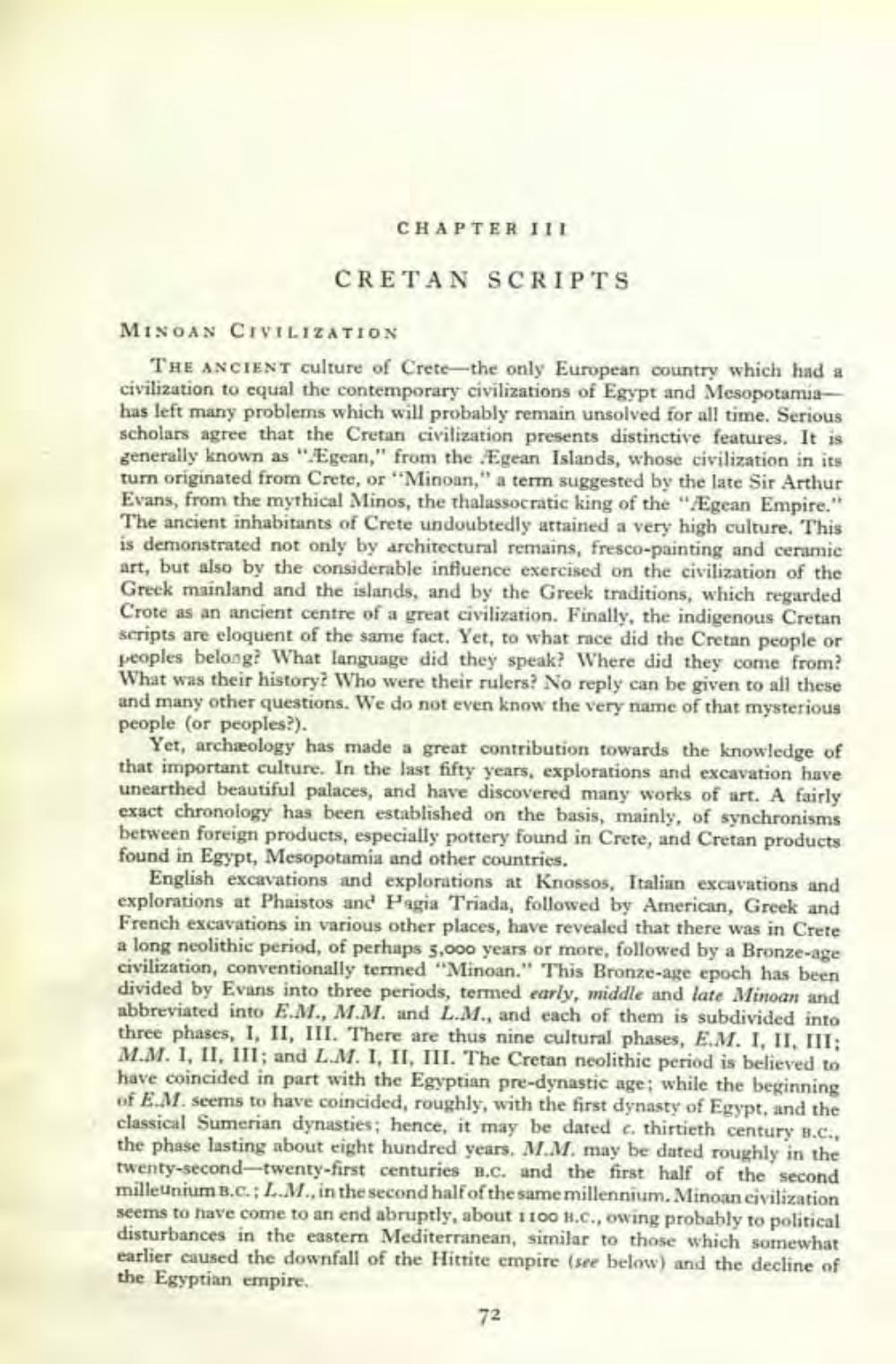________________
CHAPTER III
CRETAN SCRIPTS
MINOAN CIVILIZATION
THE ANCIENT culture of Crete-the only European country which had a civilization to equal the contemporary civilizations of Egypt and Mesopotamiahas left many problems which will probably remain unsolved for all time. Serious scholars agree that the Cretan civilization presents distinctive features. It is generally known as "Egean," from the Egean Islands, whose civilization in its turn originated from Crete, or "Minoan," a term suggested by the late Sir Arthur Evans, from the mythical Minos, the thalassocratic king of the "Egean Empire." The ancient inhabitants of Crete undoubtedly attained a very high culture. This is demonstrated not only by architectural remains, fresco-painting and ceramic art, but also by the considerable influence exercised on the civilization of the Greek mainland and the islands, and by the Greek traditions, which regarded Crote as an ancient centre of a great civilization. Finally, the indigenous Cretan scripts are eloquent of the same fact. Yet, to what race did the Cretan people or peoples belong? What language did they speak? Where did they come from? What was their history? Who were their rulers? No reply can be given to all these and many other questions. We do not even know the very name of that mysterious people (or peoples?).
Yet, archæology has made a great contribution towards the knowledge of that important culture. In the last fifty years, explorations and excavation have unearthed beautiful palaces, and have discovered many works of art. A fairly exact chronology has been established on the basis, mainly, of synchronisms between foreign products, especially pottery found in Crete, and Cretan products found in Egypt, Mesopotamia and other countries.
English excavations and explorations at Knossos, Italian excavations and explorations at Phaistos and Pagia Triada, followed by American, Greek and French excavations in various other places, have revealed that there was in Crete a long neolithic period, of perhaps 5,000 years or more, followed by a Bronze-age civilization, conventionally termed "Minoan." This Bronze-age epoch has been divided by Evans into three periods, termed early, middle and late Minoan and abbreviated into E.M., M.M. and L.M., and each of them is subdivided into three phases, I, II, III. There are thus nine cultural phases, E.M. I, II, III; M.M. I, II, III; and L.M. I, II, III. The Cretan neolithic period is believed to have coincided in part with the Egyptian pre-dynastic age; while the beginning of E.M. seems to have coincided, roughly, with the first dynasty of Egypt, and the classical Sumerian dynasties; hence, it may be dated c. thirtieth century B.C., the phase lasting about eight hundred years. M.M. may be dated roughly in the twenty-second-twenty-first centuries B.c. and the first half of the second millenium B.C.; L.M., in the second half of the same millennium. Minoan civilization seems to have come to an end abruptly, about 1100 H.c., owing probably to political disturbances in the eastern Mediterranean, similar to those which somewhat earlier caused the downfall of the Hittite empire (see below) and the decline of the Egyptian empire.
72




